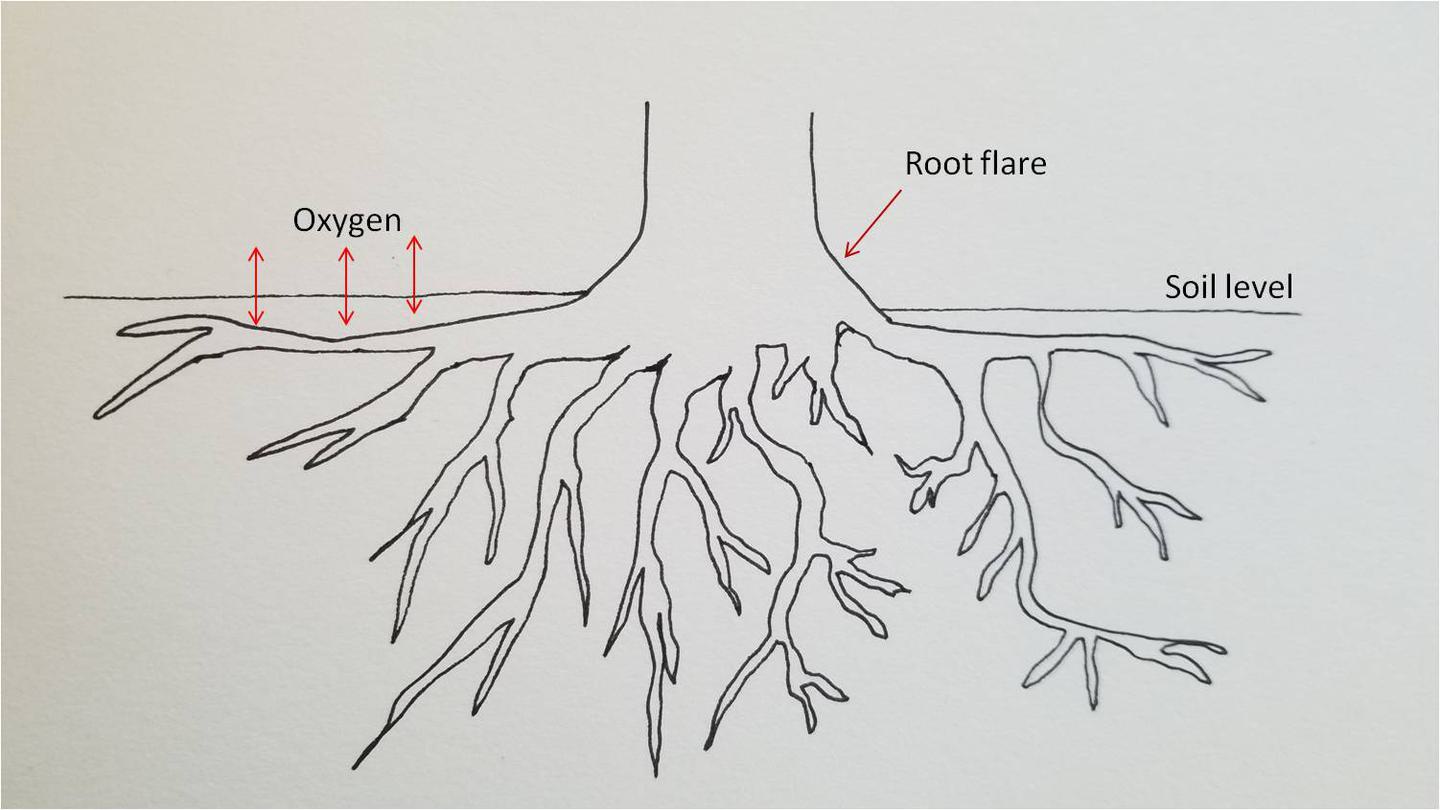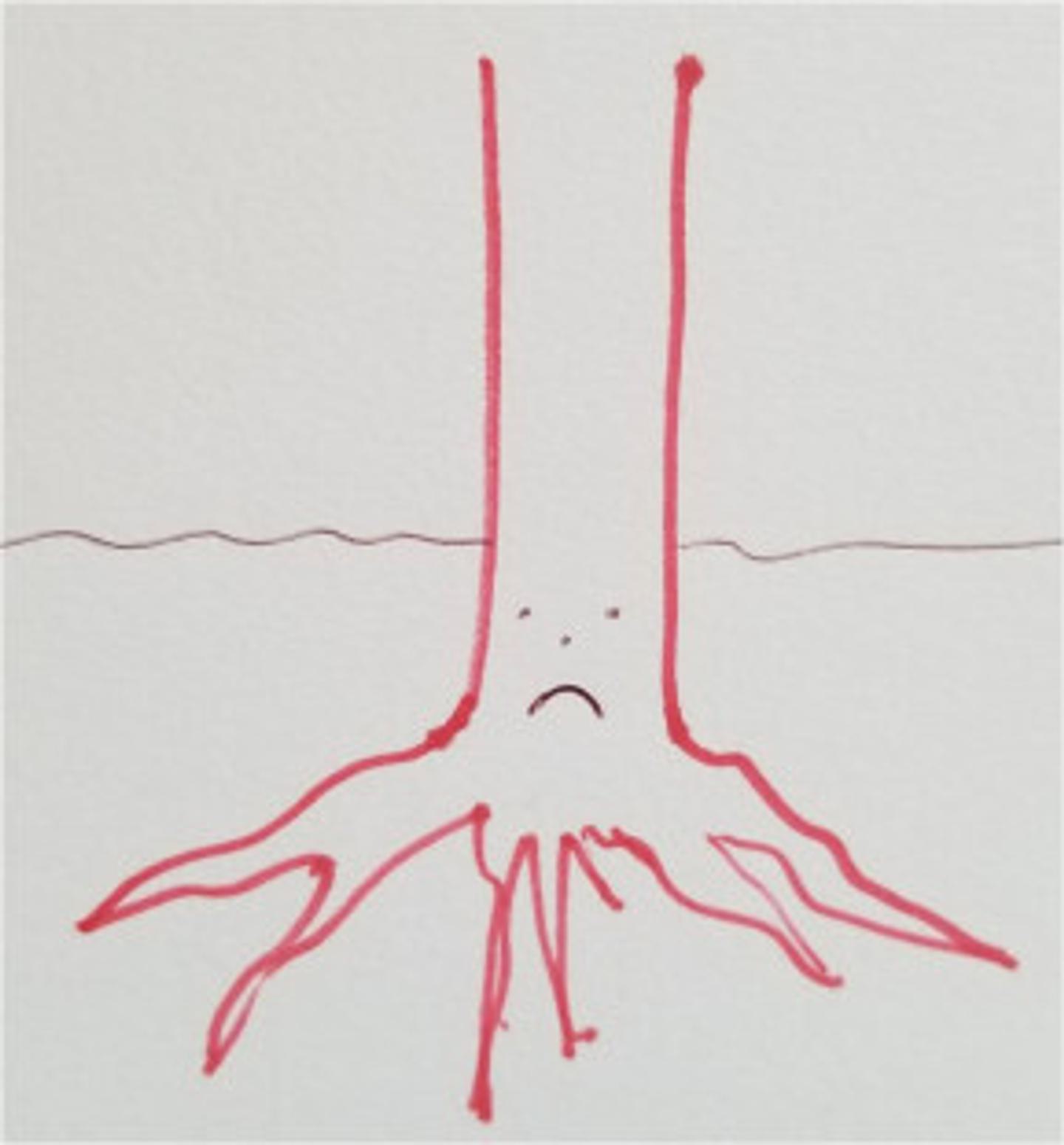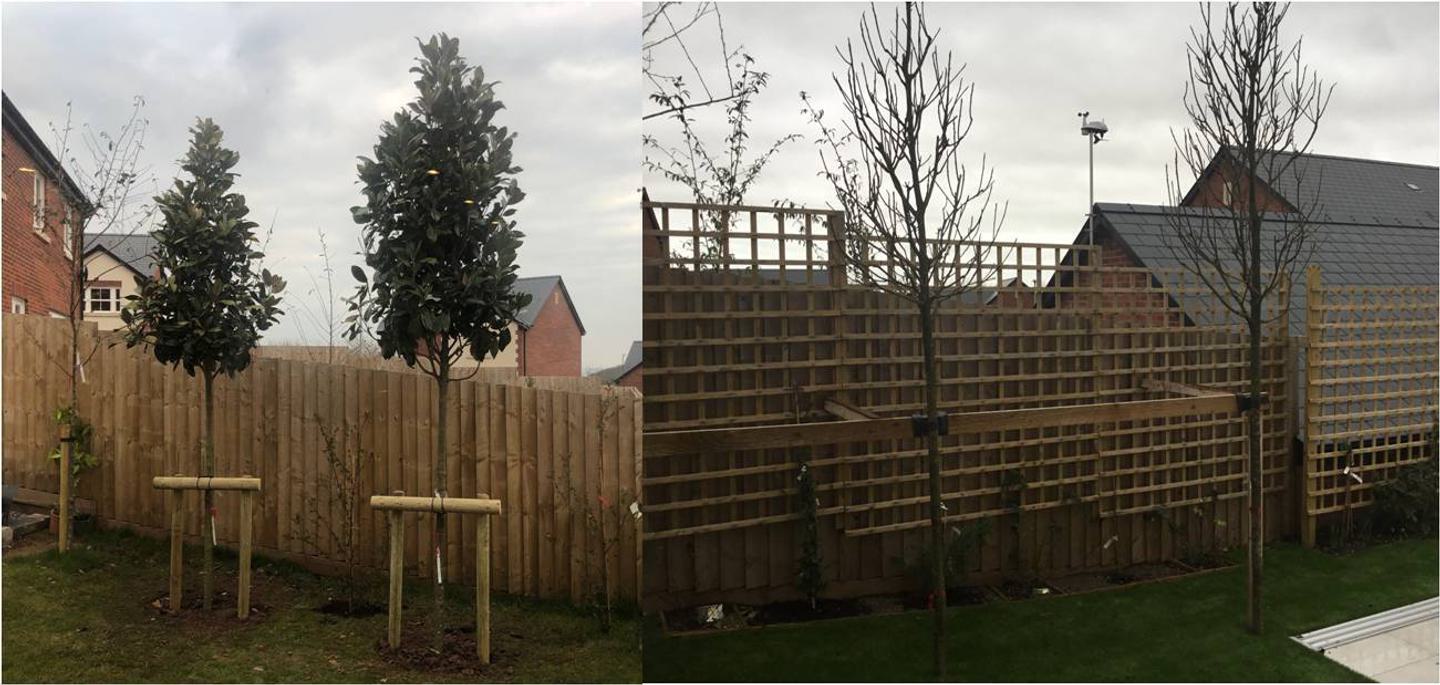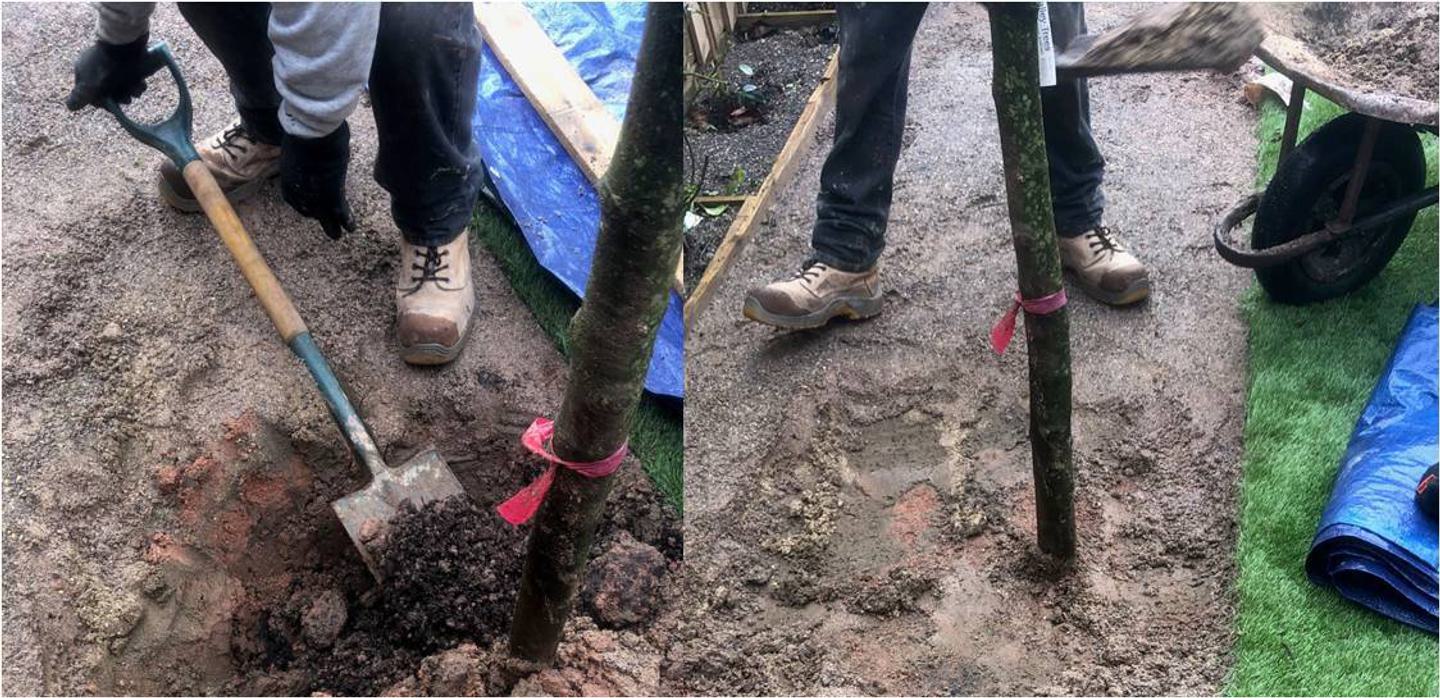Guides
Planting too deep: why it harms trees
If you've read our guide to planting (which you really should!), you'll see it mentions identifying the right spot to bring the soil to, when you plant your tree. This point, just above the roots, at the base of the trunk, is called the root flare (or sometimes root collar or root crown). Here's why you don't want to bury it and what signs you might see if this has occurred.
The root flare
The root flare is the point where the woody tissue on the tree's main stem turns into a different type of organ: roots. Although all you might see is tough, woody material, the stem and roots are adapted to live and function in different conditions.

Functions of roots and stem
Generally speaking, most tree roots are adapted to the warm, moist conditions of the top two feet of soil. They contain hormones that tell them to grow in a direction that will help the tree grow, i.e. towards soil that contains a nice mix of water, nutrients and air, or to thicken up to provide an anchoring system for the tree's top growth.
It's important to note that roots do require air to be healthy. A well-textured soil, that isn't over-compacted, will contain lots of little air pockets that allow roots to 'breathe'. The deeper you go, the less air there is, so most roots like to be fairly close to the soil surface.
The trunk, meanwhile, is made up of concentric layers: structural heart and softer sap wood; a ring called cambium that produces water and nutrient-transporting tubes; inner, living bark and outer, dead bark, that protects everything inside.
Bark keeps water inside the stem and keeps out (as far as possible) things that might attack the tree (insects, rabbits, deer, bacteria and fungi). It's made up of things like hard lignin and pathogen-repellent tannins. (In the cork oak, this dead outer layer gets so thick it can be harvested without killing the tree.)
In young trees, however, bark isn't well developed, and there's only a thin 'skin' to protect everything underneath. This skin needs to age, above soil, to become a good, functional bark.

Effects of burying too deep
You might not notice the detriment caused by planting too deeply until a while after planting, but it can cause long-term problems.
If the base of the stem is buried, it may start to rot. The thin skin of a young tree, especially, is no challenge against permanently wet conditions in soil teeming with bacteria and fungi that love to eat away at tree material. (The roots are adapted to survive in soil, but the stem isn't, in most cases.)
If the outer tree stem rots away, there's nothing to protect the cambium from attack. The cambium produces the tree's life-support system, so you can figure out what comes next!
Note that some trees will adapt to the stem being buried with few/no ill effects as they are able to easily convert stem into roots.* These include willow and poplar - trees that also sucker freely and don't mind being flooded now and then. Others, like beech, are very susceptible as they cannot easily adapt.
Some trees will produce adventitious roots (roots from the stems) to try and access air, and these may eventually girdle the trunk in some cases.
* When you take cuttings, of course it relies on the ability of a plant stem to transform into roots, given the right conditions, but think about how you usually use very free-draining growing media to avoid rot.

How to check if your tree is planted too deeply
If your tree is showing signs of ill-health (e.g. low vigour, few/small leaves, leaf discolouration), this can be a symptom. Bark cracking can be a sign in older trees.
Observe the base of the tree. The flare should be visible; it shouldn't look like a telegraph pole coming out of the ground.
If you're unsure you can see the flare (e.g. the stem is irregular or grafted), carefully scrape away some of the soil around the base of the trunk. The roots should show up less than 3cm down. If you're excavating further to find them, it's planted too deep.

Remedying the situation
If the tree was planted in the last 12 months, you might be able to carefully prise the whole thing up and replant at the correct depth. Try not to dig a hole that is deeper than the extent of the roots as the looser soil will be prone to settling and the tree could sink.
Unfortunately, many of the signs of planting too deeply often show up after the first year. If your tree is older, it may have started to entrench itself and will be tricky to lift up. You will need to expose the root collar, removing excess soil from around the base of the tree, creating a shallow gradient away from the stem. You want to avoid channelling water to create a pool around the newly exposed root flare.

How to get it right
- On your freshly purchased bare root tree, look for the soil line where the tree has previously been planted. It should look a bit darker underneath and a bit lighter above.
- If you can't see the line, you can make your own mark with chalk or something else non-toxic, at the point where the trunk starts to bulge and produce roots.
- Aim to dig a hole that will nicely accommodate all the roots, in their natural position (without squashing them up). Bending roots to fit into a too-narrow hole may cause them to grow in a circle and girdle the tree.
- Hold the tree upright as you start to backfill the hole with soil, shaking the tree a little to ease soil into the crevices under the roots.
- Once you are happy that the bottom of the roots are sitting on a nice bed of soil, continue filling and gently poke soil between the roots with a stick or similar, being careful not to bash the roots. The tree should become firm as the backfilling reaches the soil line.
- When you have filled the hole up level with the surrounding ground, press the soil down a little with your foot, just enough to make sure the tree isn't going anywhere. Don't over-compact!
With a pot-grown tree, just make sure to plant so that the top of the compost is in line with the surrounding soil.